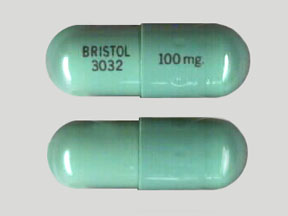Lomustine Disease Interactions
There are 5 disease interactions with lomustine.
Lomustine (applies to lomustine) pulmonary infiltrates/fibrosis
Major Potential Hazard, Moderate plausibility. Applicable conditions: Pulmonary Impairment
Pulmonary infiltrates and/or fibrosis have been reported during lomustine therapy. Toxicity occurred after 6 months of cumulative doses usually > 1100 mg/m2. Late reduction in pulmonary function, progressive fibrosis, and death have been noted. It is recommended to permanently discontinue therapy in patients diagnosed with pulmonary fibrosis. Therapy with lomustine should be administered cautiously in patients with preexisting pulmonary dysfunction. Pulmonary function studies prior to and during therapy are recommended.
Nitrosoureas (applies to lomustine) infections
Major Potential Hazard, High plausibility. Applicable conditions: Infection - Bacterial/Fungal/Protozoal/Viral
Nitrosoureas can induce delayed myelosuppression. The use of nitrosoureas may be contraindicated in patients with known infectious diseases. All patients should be instructed to immediately report any signs or symptoms suggesting infection such as fever, sore throat, or local infection during therapy with nitrosoureas. Close clinical monitoring of hematopoietic function is recommended.
Nitrosoureas (applies to lomustine) myelosuppression
Major Potential Hazard, High plausibility. Applicable conditions: Bone Marrow Depression/Low Blood Counts, Fever, Bleeding
Nitrosoureas induce delayed bone marrow suppression that is cumulative and dose-related. Thrombocytopenia is usually more severe than leukopenia. Anemia occurs less frequently and is less severe. Patients should be instructed to immediately report any signs or symptoms suggesting bone marrow suppression such as fever, sore throat, local infection, bleeding or symptoms of anemia. Therapy with nitrosoureas should be administered cautiously in patients with bone marrow suppression. Blood counts should be monitored at least six weeks after a dose and dosage adjustments made based on the nadir blood counts of the previous dose.
Carmustine/lomustine- renal dysfunction
Moderate Potential Hazard, Moderate plausibility.
Renal abnormalities such as azotemia, and progressive decline in renal function have been reported after prolonged therapy with large doses of carmustine and lomustine. Lower total doses have also resulted in kidney damage. Therapy with carmustine or lomustine should be administered cautiously in patients with a history of or predisposition to renal dysfunction. Clinical monitoring of renal function is recommended.
Nitrosoureas (applies to lomustine) hepatic dysfunction
Minor Potential Hazard, Low plausibility. Applicable conditions: Liver Disease
A reversible increase in liver transaminase, alkaline phosphatase, and bilirubin levels has been reported during therapy with nitrosoureas. Therapy with nitrosoureas should be administered cautiously in patients with a history of or predisposition to compromised hepatic function.
Switch to professional interaction data
Lomustine drug interactions
There are 288 drug interactions with lomustine.
More about lomustine
- lomustine consumer information
- Check interactions
- Compare alternatives
- Drug images
- Side effects
- Dosage information
- During pregnancy
- Drug class: alkylating agents
- En español
Related treatment guides
Drug Interaction Classification
| Highly clinically significant. Avoid combinations; the risk of the interaction outweighs the benefit. | |
| Moderately clinically significant. Usually avoid combinations; use it only under special circumstances. | |
| Minimally clinically significant. Minimize risk; assess risk and consider an alternative drug, take steps to circumvent the interaction risk and/or institute a monitoring plan. | |
| No interaction information available. |
See also:
Further information
Always consult your healthcare provider to ensure the information displayed on this page applies to your personal circumstances.


